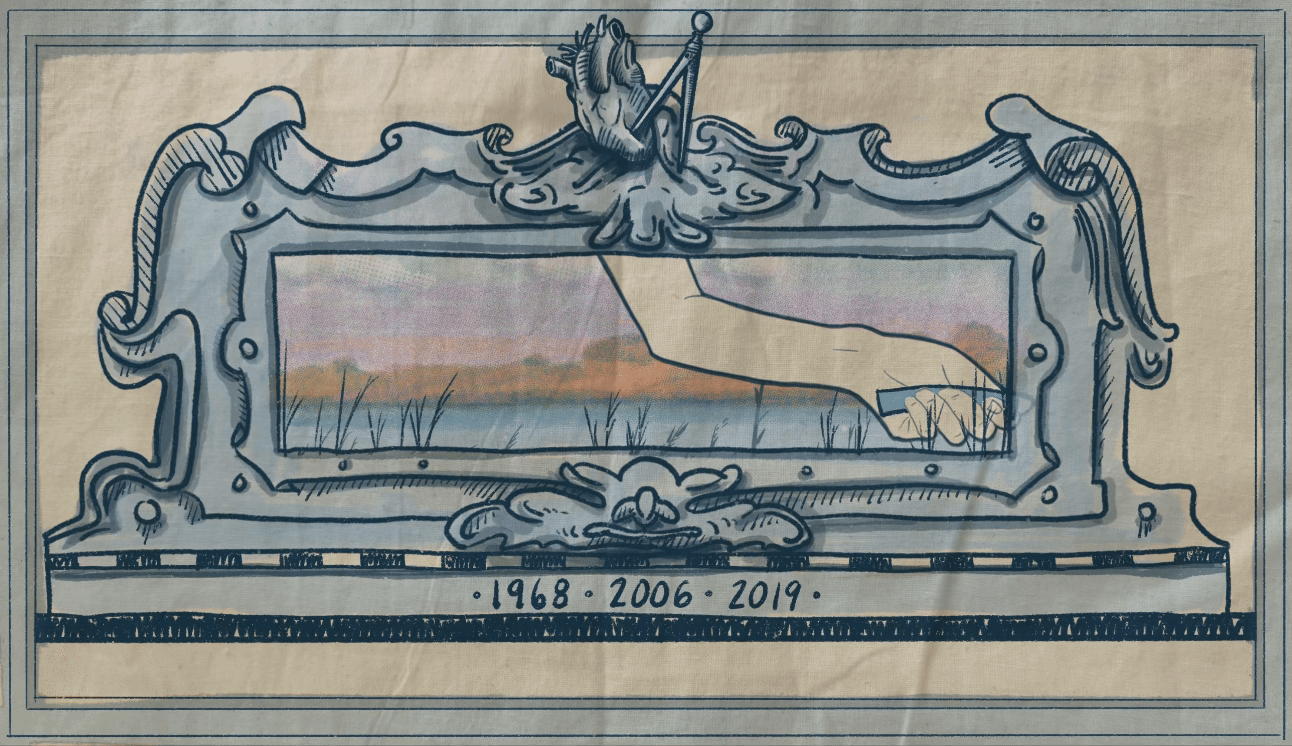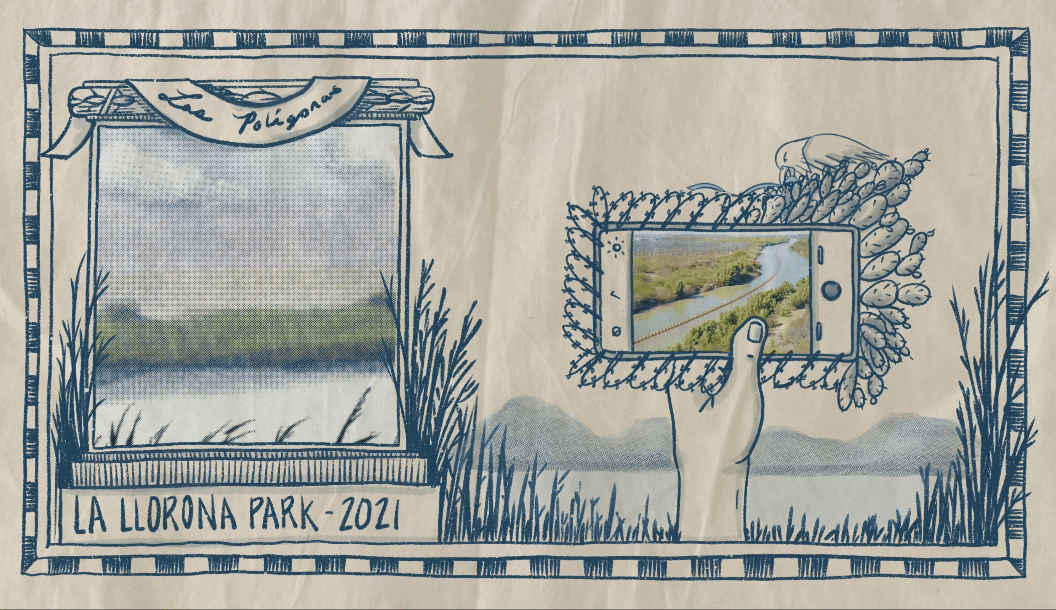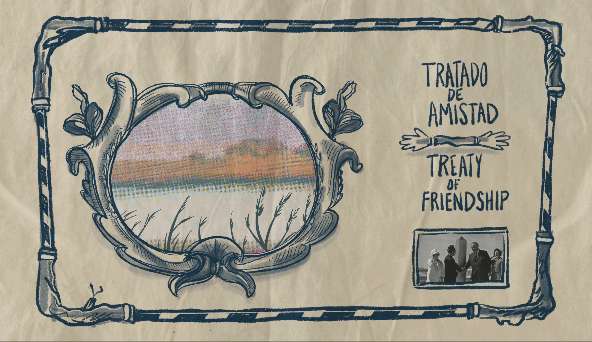A friend will help you move; a best friend will help you move a body.
This was the favorite quip of J, my best friend from youth, who died in a car accident in our last semester at the University of Texas at El Paso.
Friendships tend to grow out of shared pleasure and shared utility. But the friend who will “help you move a body” is most rare because, like the saying implies, there can be high stakes for such limitless friendship. I first experienced something close to that feeling with J.
The words “move” and “body” have different meanings for me now. Movement is now my profession. I am an animator and an assistant professor at the University of Arizona. My research is centered on the portion of the Rio Grande/Río Bravo that separates El Paso and Ciudad Juárez, Mexico, footsteps from where I came of age and where I met J and scores of people who taught about humility, compassion, and the limitless boundaries of those “best” friendships.
I have read the 1848 Treaty of Guadalupe Hidalgo—also titled the Treaty of Peace, Friendship, Limits, and Settlement between the United States of America and the United Mexican States—and the nine subsequent treaties or conventions necessitated by the meandering river/border with two names.
Long after the 1848 treaty, the treaty named the Chamizal Convention of 1963 led to the channelization of the Rio Grande/Río Bravo that culminated in 1968. Divisions have deepened over time, separating a body of people who have resided in this region for thousands of years.
In reading these treaties, I continually trip over the word “friendship.” Ostensibly, it’s like saying, We are friends, so I’m taking your land, or, Now that I’ve taken your land, we can be friends. The treaty would draw a boundary through the deepest parts of the river channel, but the survey methods were not equitable from the start—mainly because the Mexican Survey Commission was far less resourced than that of the U.S. Geological Survey.
I find questionable the evocation of the word “friendship” in a document that also frames the Indigenous populations of both colonial nations as a common adversary.

In 2021, a group of us with ties to this region formed an all-women film collective. We called ourselves “las Polígonas” (the polygons) and prioritized trust-building over any specific creative output. This felt radical and wonderful, particularly against the bleak context of the pandemic.
Our group first met in person in El Paso to work on a project. Celina Galicia, a filmmaker in our group who recently finished a documentary titled Ternura Radical (Radical Tenderness) about Juárez activists fighting for justice in the name of victims of gender violence, took us to a park where we could easily access the river and where there was no wall, no concertina wire, and no U.S. Border Patrol agents. This was possible only because the park was located 35 miles west of the El Paso/Juárez border in New Mexico.
One by one, we each got into the river—something none of us had ever attempted before.

At that moment I thought about what this body of water meant to each of us and perhaps the way it observed and absorbed our struggles as well as our laughter. We made a portrait together that reminded me of a photo I once saw in a Texas Monthly article from the 1970s featuring people swimming and playing in an open channel near the International Dam. The idea struck me that this river, which has been almost entirely recast as a border checkpoint, could and does still exist as a place of recreation and pleasure.
Ingrid Leyva, another polígona, dear friend, and queer transfronteriza artist, created the seminal portrait series “Mexican Shoppers,” which complicates the way we think of the linked economies of the United States and Mexico. Our friendship is manifest in our collaborative work. We play together in this militarized space. Once, while crossing the Santa Fe International Bridge, we made a game of swapping passports again and again, increasing our speed faster as we approached the Customs and Border Protection checkpoint. Recently, we reanimated the handshake between Presidents Lyndon B. Johnson and Gustavo Díaz Ordaz following the signing of the Chamizal Convention, but in our version we make the handshake into an infinite loop mouthing the words “Acepto” and “I accept” over and over to replace and reclaim our friendship in contrast to that of nation-states and the border we know today.
The river shapes us as much as we shape the river.








